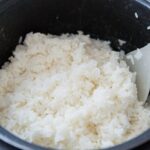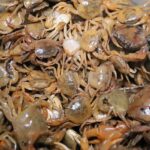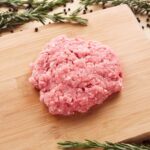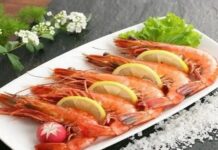Alloy Chopsticks – The Silent Toxin from Cheap Materials
Many consumers favor alloy chopsticks for their durability, aesthetic appeal, and ease of cleaning. However, chopsticks made from unidentified alloys, especially those that do not meet food safety standards, may contain heavy metals such as lead, nickel, and cadmium.
According to Doctor Tran Thi Minh Nguyet (Director of the Ho Chi Minh City Institute of Nutrition Research), using these chopsticks to pick up hot food or soak them in soup for extended periods can cause toxic substances to leach out and contaminate the food. “Prolonged exposure to heavy metals can cause damage to the liver and kidneys and impair the body’s immune system,” the doctor warned (source: ZingNews.vn)
Solution: Opt for chopsticks made from natural materials such as bamboo or wood, or high-quality stainless steel chopsticks with clear origins and food safety certifications.
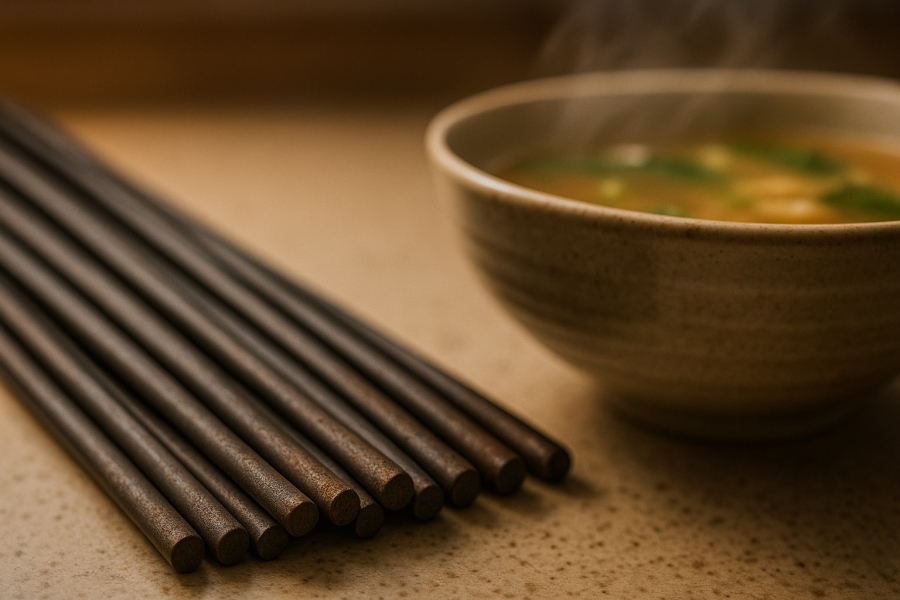
Pressed Wood Cutting Boards – A Hidden Bacteria Haven
Inexpensive pressed wood cutting boards are typically made from wood chips and industrial adhesive. With prolonged use, especially with raw food, the surface of the cutting board can crack, providing an ideal environment for bacteria and mold to thrive. Even more concerning, the adhesive used in these cutting boards may contain formaldehyde, a known carcinogen according to the World Health Organization (WHO)
Ms. Phuong Linh (from District 10, Ho Chi Minh City) suffered a severe intestinal infection after using a pressed wood cutting board to prepare raw food, even though the board appeared relatively new. Upon testing, doctors discovered an extremely high level of bacterial residue on the board’s surface despite thorough washing.
Solution: Switch to using cutting boards made from solid wood, PP plastic, or natural stone. It is advisable to use separate cutting boards for raw and cooked foods to prevent cross-contamination.

Enamel-Coated Tableware – Attractive but Risky
Bowls, cups, and plates with vibrant enamel coatings are often favored for their eye-catching, vintage appearance. However, the enamel coating may contain lead and cadmium, two highly toxic heavy metals if ingested.
According to the Food Safety Department of the Ministry of Health, low-quality enamel products can leak lead when in contact with acidic foods such as lemons, vinegar, or tomatoes. Regular use of such tableware can lead to chronic lead poisoning, affecting the nervous system and posing a particular danger to children.
Solution: Prioritize plain white ceramic tableware or products from reputable brands that have been certified as safe for food contact materials.
Industrial Stainless Steel Cookware – Cheap but Harmful
Pots, pans, and utensils made from industrial stainless steel are often sold cheaply in markets. While they may appear no different from high-quality products, the metal composition does not meet safety standards and is prone to oxidation, allowing toxins to leach into food, especially when cooked at high temperatures.
TS. Nguyen Duy Thinh (from the Institute of Biotechnology and Food Technology, Bach Khoa Hanoi University) emphasized: “Stainless steel used in food preparation must be of the 304 or 316 grade. Unidentified types, without markings, are usually made from impure stainless steel, and when in contact with acids or salts, they can release heavy metals into food” (source: VnExpress.net)
Solution: Only purchase cookware that has the stainless steel grade clearly marked on the product. Avoid cheap, unidentified products. Regularly inspect the surface for pitting, flaking, or abnormal discoloration, as these are signs that the cookware needs to be replaced.
Don’t Let Hidden Hazards in the Kitchen Jeopardize Your Health
The kitchen is the heart of the home, but it can also be a source of health risks if we are careless with the tools we use. Convenience, aesthetics, and low prices should never be traded for long-term health.
Advice: Regularly inspect and replace kitchen tools that may pose risks. Health is not something to gamble with, and sometimes the smallest, most overlooked details can have the most significant consequences.
A Spine-Chilling Delicacy: The Ultimate Culinary Delight of Northwest Vietnam
For many, the mere mention of “tiết canh” is enough to induce hesitation. But when it comes to “fish tiết canh”, a traditional Vietnamese delicacy, the level of apprehension can escalate exponentially. This unique dish not only challenges the palate with its unfamiliar taste but also shocks with its name and preparation methods.

























